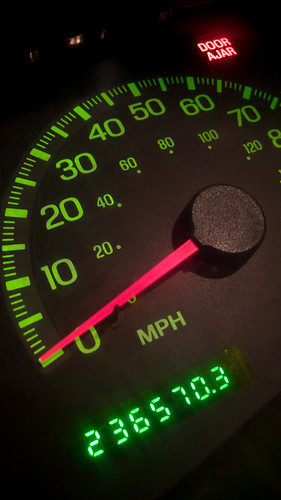Note: before you read this post, you should really see “Deducting Employee Business Expenses on Your Tax Return (Part 1)” first to see if you should even consider claiming them.
Okay, so you’ve decided that it makes sense for you to be reporting your job expenses on your tax return. Generally, people who report employee business expenses are in sales; folks who do a lot of driving and a lot of business entertaining. Those are the expenses I’m going to look at today.
Business miles: I have a lot of blog posts about mileage, usually I’m writing about self-employed people, but the rules for claiming mileage are the same for employees. If you are commuting to the office—that’s not a deductible expense. If you’re driving around town meeting clients—that is deductible.
For example: let’s say your average round trip commute is 20 miles every day. The average person commutes to work 250 days out of the year so if your commute is 20 miles a day, you can expect your commuting miles to be 5000 miles a year. That’s 5000 miles you can’t claim as a business expense.
But, let’s say you kept really good records of your business miles. You traveled 17,000 miles on business (including your commute) during the year. That means you drove 12,000 deductible miles and that’s pretty significant. (17,000 – 5,000 is 12,000 miles)
To claim your mileage, you’ll need to know what type of car you drive, and the year, make, and model. Also, when did you start using it for work? The paperwork is going to ask you how many business miles you drove, how many commuting miles, and how many other miles (they mean personal—picking up the kids at school, buying groceries, and stuff like that.)
Do not lie about the mileage! It is the most audited piece of any tax return. Keep a log, use MapQuest, and learn to read your odometer. Don’t make stuff up. Most people over estimate their business mileage.
Use our FREE mileage log on our downloads tab: http://robergtaxsolutions.com/free-downloads/. This is FREE to disburse amongst your family or friends.
Business entertaining: The business lunch. Just because you happen to have a receipt for eating a meal in a restaurant doesn’t make it a legitimate business expense. If you learn nothing else from this post, learn to write on your receipt. Who did you eat with and what was the meeting about? It doesn’t have to be fancy: Fred—networking, Marge—advertising, Peggy—sales call. Enough to jog your memory if you get asked.
Dinner with your spouse is not a deductible business expense even if you’re talking business. Don’t be naive. The receipt for the fancy restaurant with the $200 dinner dated February 14th sure as heck better be well substantiated for business if you want to float that one by the IRS. Same goes for the McDonald’s Play Place, how many people really are conducting business there? (Okay, full disclosure, I’ve got a business client who does hold business meetings at McDonald’s—it works with balancing family duties, but the meetings are well documented.)
Remember, most business meals are in the 50% category; meaning that if you had $1,000 worth of business meals it only counts as a $500 deduction on your tax return.
Employee business expenses are a popular target for IRS audits. It doesn’t mean you shouldn’t claim them though, it just means that you need to be extra careful. Make sure you document everything. Write on your receipts, keep a log book, hold onto your proof and you’ll be just fine with your deductions.

